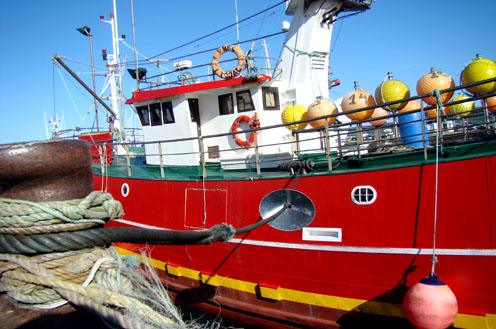Planas had already expressed Spain's support for the treaty at the meeting of EU fisheries ministers held by videoconference on Wednesday 9 June, prior to today's approval by the Council of the European Union.
The agreement fixes fishing opportunities, known as TACs (Total Allowable Catches) and quotas, for fish stocks shared between the EU and the UK for 2021, and for deep-sea species for 2022.
The approval comes as a result of consultations that have taken place between both parties since February, in development of the Trade and Cooperation Agreement reached at the end of 2020 after Brexit, and which concluded with a verbal pre-agreement reached last week between the European Commissioner for the Environment, Oceans and Fisheries, Virginijus Sinkevicius, and the British Secretary of State, Dominic Raab.
In the case of Spain, the agreement is satisfactory, since the TAC levels set for the different stocks of interest to the Spanish fleet will allow fishing to continue without distortions compared to previous years. Thus, for the main species, such as hake, John Dory, monkfish and Norwegian lobster, in the waters of France, Ireland and the United Kingdom, the agreed figures are in line with scientific recommendations and are estimated to be sufficient for the fleet as a whole until the end of 2021.
The result is also satisfactory with regard to species which, due to the landing obligation and their bycatches, could pose a problem for the Spanish fleet, such as red seabream and cod in the Celtic Sea and the West of Scotland, where Spain demanded sufficient quotas from the outset, given that the TAC levels are maintained with respect to 2020.
Some stocks such as the Cantabrian horse mackerel are also covered by this agreement as they are part of a larger biological stock that includes UK waters, although with a slight decrease in the TAC in line with the available scientific advice, which for global and practical purposes will have no impact on the availability of quota for the Spanish fleet in the current 2021.
In addition to setting the TAC levels, on which the allocation keys between the two parties established in the Trade and Cooperation Agreement will be applied, the agreement includes other elements related to the use of the TACs, which will be subject to further analysis in the specialised fisheries committee between the two parties, which will begin its work in the coming weeks. These include requests for scientific advice for the future management of certain species, flexibilities, technical measures or aspects of the implementation of the landing obligation.
It will now be necessary to transpose the agreement into EU law by amending the annual TACs and quotas regulation, which has so far fixed provisional figures until 31 July.
Luis Planas asked the European Commission and the Portuguese rotating presidency to speed up this process so that fishermen can have the necessary legal certainty, and that it be included on the agenda of the next Council of Ministers, scheduled for the end of June. The Council would also stipulate the precise figures for TACs and quotas for each Member State until 31 December.
Allocation of the TACs provided for in the agreement
Non official translation





